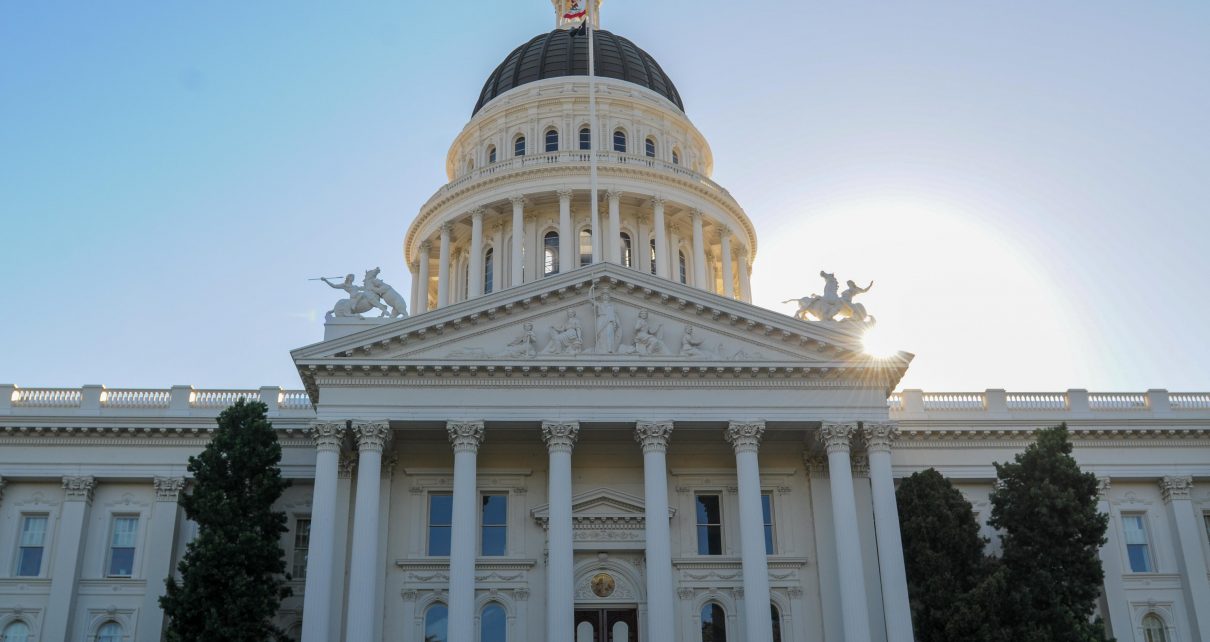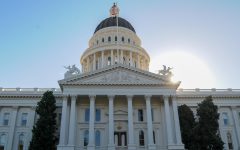
California State Capitol. (Photo: Kevin Sanders for California Globe)
Frequently Asked Questions About California Legislative Procedure
Is the orders of business of the Assembly and Senate the same?
By Chris Micheli, January 24, 2024 2:30 am
Do constitutional office appointments require confirmation only by the Senate? For nominees to any of the constitutional offices, those individuals must be confirmed by both the Assembly and the Senate. However, only the Senate confirms specified gubernatorial appointments.
Is a statute in effect until the voters cast a vote on the referendum that was filed? A referendum that qualifies for the next statewide general election stays the effective date of the newly-enacted bill. If the referendum fails, the statute takes effect not retroactively to its originally scheduled effective date, but rather after the Secretary of State certifies the referendum vote.
Is an adjournment motion always in order? Although that is the case under Robert’s Rules of Order, in the California Legislature, an adjournment motion is not in order if bills are still “on call” (see, e.g., Senate Rule 42).
Can the Legislature and the people through the initiative process make the same statutory changes? An initiative is a proposal to change statutory law or the California Constitution, submitted directly by members of the public rather than by the Legislature, and initiatives require voter approval at a statewide election. The Legislature can only put forth proposed constitutional amendments because they pass bills that add, repeal or amend statutes. The one exception is a bond measure that is placed on the ballot by a bill passed by the Legislature and signed by the Governor.
Do the Assembly and Senate always meet separately? The Assembly and Senate may meet together, usually in the Assembly Chamber, in a “joint session”. The purpose of a joint session is to receive special information, such as the Governor’s State of the State address or to hear from a foreign dignitary.
Like Congress, is committee membership based upon seniority? Under Senate Rule 11, the Rules Committee must give consideration to seniority, preference and experience of senators, as well as give equal representation to all parts of the state, when making committee appointments. There is no such rule in the Assembly.
Does the Legislative Counsel provide legal advice to the Governor and all the other constitutional officers? The Legislative Counsel provides legal advice to Members of the Legislature and the Governor, but not to the other constitutional officers.
Does a motion to table a bill or amendments require a majority vote? A motion to table any measure requires 41 votes of the Assembly or 21 votes of the Senate. A motion to lay an amendment on the table is adopted by a majority of Members present and voting (see, e.g., Assembly Rule 86).
Are all resolutions used by the Assembly and Senate essentially the same? No, there are actually three types of resolutions: House resolutions (HR or SR) deal with matters of a single house; concurrent resolutions (ACR or SCR) relate to matters to be treated by both houses, and joint resolutions (AJR or SJR) relate to matters connected with the federal government.
Is the orders of business of the Assembly and Senate the same?
The Senate Order of Business is: 1. Roll Call. 2. Prayer by the Chaplain. 3. Pledge of Allegiance. 4. Privileges of the Floor. 5. Communications and Petitions. 6. Messages from the Governor. 7. Messages from the Assembly. 8. Reports of Committees. 9. Motions, Resolutions and Notices. 10. Introduction and First Reading of Bills. 11. Consideration of Daily File: a. Second Reading. b. Special Orders. c. Unfinished Business. d. Third Reading. 12. Announcement of Committee Meetings. 13. Leaves of Absence. 14. Adjournment.
The Assembly Order of Business is: 1. Rollcall 2. Prayer by the Chaplain 3. Reading of the Previous Day’s Journal 4. Presentation of Petitions 5. Introduction and Reference of Bills 6. Reports of Committees 7. Messages from the Governor 8. Messages from the Senate 9. Motions and Resolutions 10. Business on the Daily File 11. Announcements 12. Adjournment
Is any resolution introduced by a Member heard by a committee? As a general policy, the Assembly Rules Committee does not hear resolutions weighing in on matters of foreign policy. The Senate has no such limitation.
Is a Letter to the Daily Journal published in both houses in order to be in effect? The Letter to the Journal, generally used to express legislative intent or explain the purpose of a bill, is published in the journal of the bill’s house of origin.
Why does the Legislature convene a new session in early December, but designate the new Session as the following two years? California’s Constitution, in Article IV, Section 3(a), provides, in part, the following: “The Legislature shall convene in regular session at noon on the first Monday in December of each even-numbered year and each house shall immediately organize.”
Why does the Legislature choose officers, including unelected persons such as the Assembly and Senate Chaplains? Article IV, Section 7(a) provides, in part, the following: “Each house shall choose its officers and adopt rule for its proceedings.”
Why does the Legislature publish the Assembly Daily Journal and the Senate Daily Journal, especially when they are required to video/audio tape all committee hearings and floor sessions? Article IV, Section 7(b) provides, in part, the following: “Each house shall keep and publish a journal of its proceedings.”
Why are the Democratic and Republican Caucuses allowed to meet in private without public notice or observation? Article IV, Section 7(c)(4) provides in full: “A caucus of the Members of the Senate, the Members of the Assembly, or the Members of both houses, which is composed of the members of the same political party, may meet in closed session.”
Why is a bill required to be read three times when we have the Internet and other sources to read and hear about proposed legislation? Article IV, Section 8(b)(1) provides, in part, the following: “No bill may be passed unless it is read by title on 3 days in each house except that the house may dispense with this requirement by rollcall vote entered in the journal, two thirds of the membership concurring.”
Why are there two votes announced on the floor of the Assembly and Senate for a bill that contains an urgency clause? Article IV, Section 8(d) provides, in part, the following: “Urgency statutes are those necessary for immediate preservation of the public peace, health, or safety… In each house the section and the bill shall be passed separately, each by rollcall vote entered in the journal, two thirds of the membership concurring.”
Why can certain bills be passed even after the Legislature is scheduled to adjourn on August 31 during the even-numbered, second year of their Session? Article IV, Section 10(c) provides, in part, the following: “No bill may be passed by either house on or after September 1 of an even-numbered year except statutes calling elections, statutes providing for tax levies or appropriations for the usual current expenses of the State, and urgency statutes, and bills passed after being vetoed by the Governor.”
Why does the Governor have to introduce his budget proposal by January 10 each year? Article IV, Section 12(a) provides, in part, the following: “Within the first 10 days of each calendar year, the Governor shall submit to the Legislature, with an explanatory message, a budget for the ensuing fiscal year containing itemized statements for recommended state expenditures and estimated state revenues.”





The Senate has no such limitation.